Health and safety in the Property Care Industry – it’s a cultural thing.
I write this as the owner of a small remedial treatment company and PCA member. Like many firms I employ less than a dozen staff now, and during the recession that fell to 6 or so. The company undertakes a very diverse range of work. When I sat back and looked at the hazards and risks involved I was shocked that we hadn’t had a serious injury for so many years (one broken bone – falling from a ladder).
I was also aware that, whenever I and my team were working with larger contractors, we were unsure about exactly what these contractors expected of us; health and safety-wise. I found the paperwork they thrust in front of us confusing and the jargon they used off-putting. They seemed demanding yet they were unwilling to assist us in compliance. Knowing my job inside-out means that I’m not used to feeling vulnerable due to lack of skill, knowledge or confidance – I didn’t like the experience and neither did my staff.
So, after completing my NVQ level 4 in management I decided to look at health and safety and grasp the nettle I’d been avoiding to date.
I was introduced to Chartered Member of the Institute of safety and health; Nigel Deane CMIOSH. He speaks with a down to earth Sheffield accent and is unpretentious, straightforward and extremely knowledgeable. I decided that if a ‘normal’ Yorkshire bloke like him found health and safety fascinating and interesting, then maybe I should get some of that. Of course I have some basic training in health and safety, thanks to CSRT and I have a CSCS card, but I still felt unsure at times.
An accident waiting to happen.
Chatting to Nigel, I was struck that he was quite surprised that the work we did went so well, considering how ‘high risk’ much of it was and bearing in mind that we just did our thing in good faith and without lots of paperwork and no real management of health and safety. Eventually, after much study, I found out why we were ‘apparently’ safe:
- Our workforce were well trained in their ‘trade’ skills, which tends to improve discipline
- Staff moral and engagement was high so staff felt ‘cared for’ and in return ‘cared for themselves’
- Staff turnover is very low so all are experienced
- We were just lucky (so far).
- Slight injuries were not reported and no near misses were documented
Clearly the above situation couldn’t last and even scrapping the surface, I could see that quite apart from the horror of a major incident involving my team, I was potentially lining the company and myself up for prosecution, if things went pear shaped. Good intentions are not a defence as far as the HSE are concerned.
The next step was to find out what we didn’t know.
Nigel identified that my business is high risk – I’d never really thought of it that way but he was right; working at height and the restoration work we do is fraught with danger – we just didn’t really see it as all that bad, because up to now we’d managed it on autopilot with good intentions and everything had worked out. Nigel looked me in the eye “high risk Bry” he said…… gulp. Seems obvious now, but hearing another tell me that and knowing the HSE would view what we do in the same light, I knew that I had to act.
He recommended I immediately sign up for a NEBOSH certificate course as a minimum, if I wanted to get enough knowledge to manage risks properly. In fact he went further and recommended that a NEBOSH diploma or NVQ level 5 would be needed to manage high-risk activities (such as working at height). I could of course just leave it to my consultants, who do great job in that role (STALLARD KANE), but what I wanted to do was have some ownership of the process and you can’t get that, if you leave all the health and safety to outside consultants.
The courses and what they involve.
Nebosh certificates are available in a variety of flavours for ‘General’ – ‘Construction’ and ‘Fire’ (environment too but that’s for another post). These are nationally accepted and give a great introduction for health and safety professionals or those in management roles. They are fairly rigorous though. I have to admit that the Nebosh certificate has easily been the most demanding course and exam I had done since leaving school. Those who know about these things tell me they are at or about ‘A level’ standard or thereabouts. Not that hard, but completing these whilst running a business is a task and a half. The course included ten days full time study over the summer of 2012, with the exam in December. Two 2.5 hour papers and a practical report are involved. There was lots of homework too.
For those who can’t take the time off, these courses can be done via distance learning but I think I would have really struggled without the appointed times being in the diary and face-to-face instruction from Nigel and his team.
As Nigel had a ‘general’ course starting shortly, I enrolled on that straight away and also enrolled on the NVQ 5 to be completed after that – I am really glad I did.
It’s not all about Regulations and Acts of Parliament
The first part of the course is the most challenging, if like me you are a hands on manager. Before we can get into the job in hand; improving safety and health, the laws, codes of practice and background to the health and safety environment has to be studied. Some of this is mind-numbingly boring but it really is essential. It’s not just a case of having to know the answers to questions for an exam. The details of the Health and Safety at Work etc. Act 174 and all of the enabled regulations that spring from it slowly gets under the skin. It is the foundation of a good appreciation of health and safety. HASWA (as we safety pros call it), is a work of art; it clearly and unambiguously lays out the responsibilities of employers and employees – manufactures, designers and building owners…. It’s great. I would never had thought I would ever write something like that!
After a few weeks of the above Nigel moved onto ‘Control of workplace hazards’ and that is where we, as remedial companies can relate a little better. The practical day to day and month by month control of the risks and hazards our employees face, is picked apart and reassembled. By the time the course is over you are not only ready to sit the exam, but you are also changed from a ‘normal’ person to a ‘safety aware person’. It really does change the way you will think about management of hazards and risk, about your responsibilities and duties under HASAWA.
Has the course made Brick-Tie Limited a safer place to work?
No – on it’s own completing a course like NEBOSH will not make a company safer. However, in our recent Investors In People re-accreditation, the assessors were surprised to find that when discussing general management and employee engagement, our employees cited health and safety as a high priority and several mentioned that “We are looked after and feel safer than we did before”.
What I discovered during the Nebosh course (and the Nebosh construction certificate I’ve since completed), is that good management of staff is what good health and safety is really about. It’s not just about keeping records, filling in risk assessments and holding tool box talks (though these matter). It’s about consulting employees about their work, the risks they face and what works and doesn’t work for them. This is why we had quite a good safety record before the Nebosh – we are already good managers, but we needed to integrate our health and safety practices into our employee engagement style, which was already in place.
This is what is meant by ‘Promoting a positive health and safety culture’. There’s more to it, but in a nutshell it’s about placing health and safety right up alongside profit/loss, customer service, cash flow and marketing – showing all in the company that it is equally important and that it really matters. Sounds obvious? Well how many conversations do you have with staff about absence, quality, complaints, waste, time-keeping, appearance and other things – compared to health, well-being and safety? Do this comparison honestly and most will find that the former subjects dominate and heath and safety is usually at the back somewhere. This is why staff don’t engage with it – if the management don’t care then they don’t either.
So as the boss of the company “The controlling mind’ as the HSE would put it, I need to show dedication and leadership and so, I’ve put myself demonstrably through the wringer, to get these qualifications and more importantly bring in changes based on consultation with the staff and Nigel’s tuition.
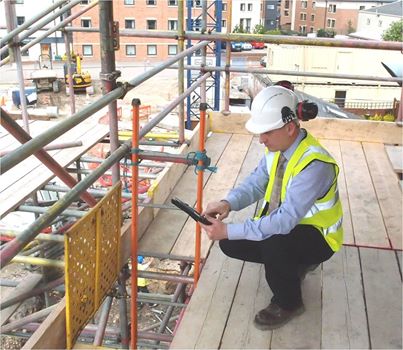
And soon… on site safety checks become second nature – employees and main contractors notice this and everyone engages….
Have the nebosh certificates impacted on our culture and behavior – where are we now compared to the beginning?
In a small firm it’s hard to tell of course – the statistics tend to break down with really small firms – if we had no reportable injuries before training and none after, what’s the point? I can only confirm that the experience seems to have worked on several levels:
- We are meeting our statutory obligations (less chance of being prosecuted)
- We are following best practice when we can (as above and less chance of injuries, civil claims and increasing insurance costs)
- Staff feel more valued and work more efficiently
- We can walk into any main-contractors site, knowing we can hold our own on safety
- Staff feel able to challenge unsafe practices
- Staff are suggesting safety improvements and seeing their worries are acted on
- The boss can sleep better
- The boss is more aware of his health and safety limitations and knows when to ask for outside advice
I could go on, but the above work together to take what was already a well-managed business to another level. I would strongly recommend that other PCA members look at the Nebosh route. Smaller firms, with say five or less employees should consider the IOSH managing safely, which is a four-day course.
All business owners and Directors should consider the IOSH and Institute of Director’s jointly accredited ‘Directing Safely’, which is a one-day course and well worth it if you are just starting out.
Joining ROSPA or IOSH is also a great way of tapping into on-going health and safety knowledge. You get access to web resources, can attend meetings and IOSH has an on-line CPD scheme which will help keep a record of your progress. Making the HSE web site a ‘favorite’ or even your ‘home page’ will be useful – the site is a goldmine of information. Membership of IOSH also includes subscription to their magazine ‘Safety and Health Practitioner‘, which is great for just keeping abreast of things and trawling for new ideas and services to help you. The PCA on-line safety portal provided by Stallard Kane is superb.
The best advice I can give though is to lead by example – make sure employees see what you are doing – consult them – reward good practice – don’t allow yourself to be seen taking health and safety lightly. Challenge unsafe practice, but don’t chastise staffs who don’t know any better, because they have been poorly trained or badly led in the first place. Only you as the manager can fix that. It takes time but all businesses can change and become what owners and employees want; sustainable; profitable and above all safe.
Dry Rot.
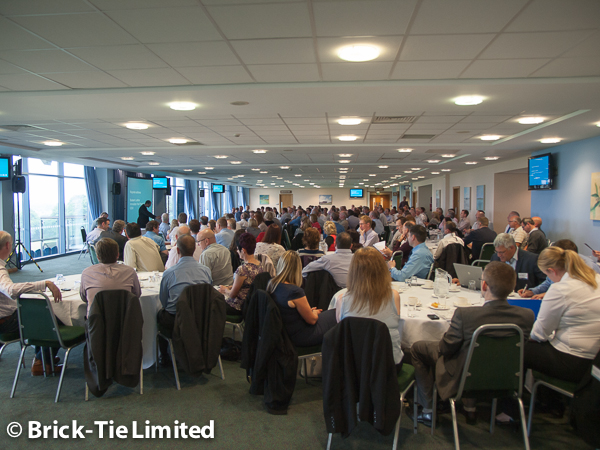
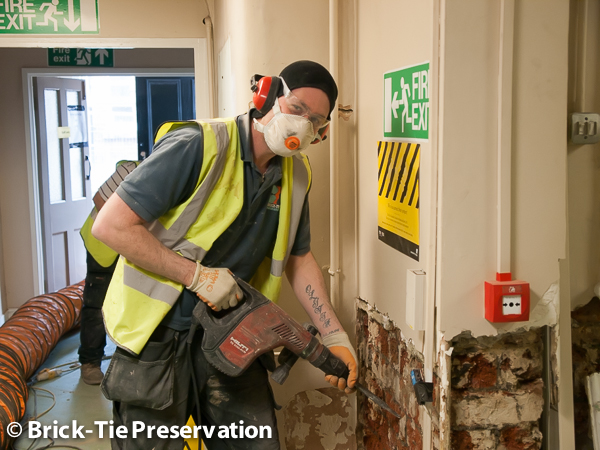
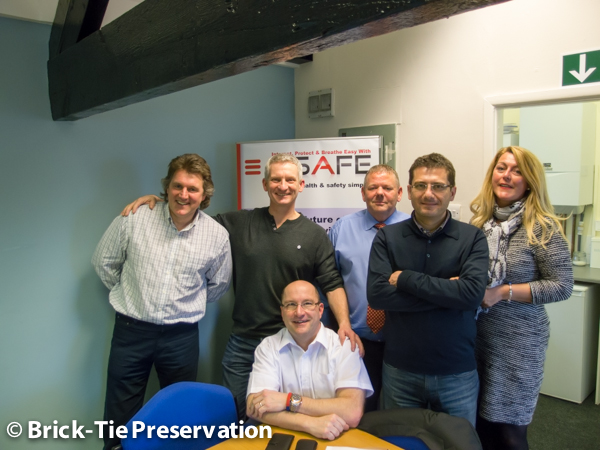
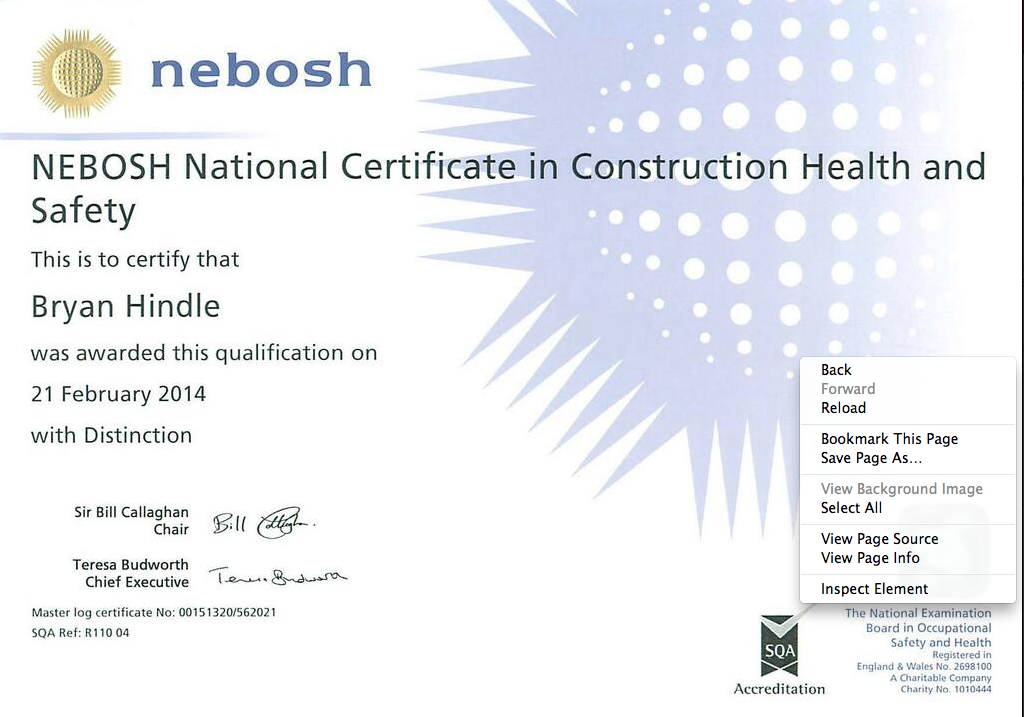
Nice and useful